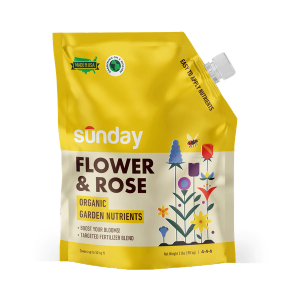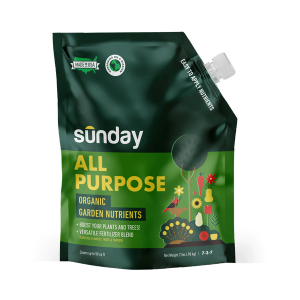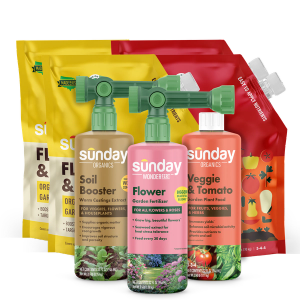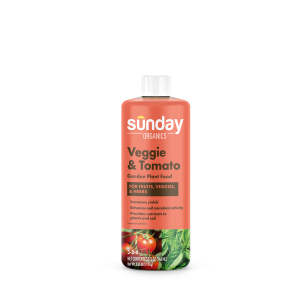When most of us anticipate autumn, we think of orchards and cider and sweaters. Getting our hands dirty in the yard? Not so much. But we’re here to change that!
Why fall planting is best
Planning a landscape—whether starting from scratch or adding onto an existing one—is exciting. But did you know that the “when” part is just as important as the “what” when it comes to planning and planting? With some key exceptions, fall is the best time to get your plants or seeds in the ground. Let’s dig into the reasons why.
- Cooler temperatures and more regular rainfall mean that your new plant will be less stressed, allowing it to focus on root growth rather than sheer survival. Remember, healthy root growth is key to good establishment.
- Planting in fall gives your perennials a head start, and they’ll usually grow out well-established in spring.
- Planting in summer—when it’s exceptionally hot and dry—is sort of like learning to drive on the freeway. If you plant during this time you’ll need to baby your plants much more to help them survive.
- Some plants require cold stratification to break dormancy, germinate, and start growing. If you plant in the spring or summer, you’ll need to wait over a year (after one winter season) to see growth.
- Spring weather can be unpredictable. Heavy rains could lead to wet, compacted soil that’s tough to dig in, and there’s always a risk of late-season frost. If frost occurs after plants start putting out tender shoot growth, that can damage the plant.
- Planting in spring may encourage plants to focus more on shoot growth (i.e., the above-ground part) rather than putting their energy into growing a strong root system first.
- Getting larger elements like trees and shrubs established early makes it easier to plan your landscape with smaller flowers and perennials down the line.
What to plant in fall
Wondering what fall flowers to plant? Looking for the best bulbs to plant in fall? There are tons of great options when it comes to hardy plants, from wildflowers that require cold stratification to shrubs that can handle the toughest of temps.
- Deciduous trees
- Sunday select: Live Oak Tree
- Shrubs
- Sunday select: Hampton Beauty Azalea
- Cool-season grasses
- Sunday select: Fescue Rescue
What not to plant in fall
Eyeing any of these plants? You’ll have to hang tight till spring—but don’t worry, we have planting guidance for these!
- Summer bulbs
- Annuals
- Tropical plants
- Warm-season grasses
What do you need to get started
Not to state the obvious but, you’ll want to have all your new plants on hand before you start digging. You’ll also need tools (a shovel, trowel, or rake, depending on what you’re planting) and a plan for irrigation. Don’t have a sprinkler or drip system set up yet? Don’t worry—you can always hand water for now. Lastly, it’s a good idea to have some mulch at planting time, to protect your plants from temperature swings and help them retain moisture.
Quick tips for fall plants
The best advice for gardening success is pretty simple: Get the right plant in the right place, and plant it at the right time. That said, there are a few other insider tips that will help you go the extra mile.
Do:
- Purchase plants that look healthy, have a good start on root growth, and are disease- and stress-free.
- Water your new plants thoroughly after planting, and water regularly during the fall if you’re not getting sufficient rainfall.
- Keep an eye out for early frosts. If temps are expected to drop below 32º Fahrenheit, protect your new plants using frost covers.
- Add a layer of mulch at the base of your plants to help insulate the roots and protect them from freeze and thaw events.
- Plant about 6–8 weeks before your expected first frost.
Don’t:
- Purchase plants with broken stems or girdled roots (trees)—or that are otherwise stressed.
- Set it and forget it. New plants need proper watering to establish a healthy root system before winter.
- Overwater. During the winter when active growth isn’t occurring, plants do not require as much moisture.
- Fertilize in fall. Wondering why? Think of it like giving candy to a child right before bed. In plant speak, this means they may start growing too rapidly, put out tender shoot growth, and skip dormancy—ultimately leading to stress and plant damage.
Ready to get planting? Buying live plants & trees from Sunday will set you up for success, because we’ll recommend the right plants for where you live.
Cited sources
Is fall a good time to plant trees and shrubs? University of New Hampshire Extension.
Is Fall for Planting? PennState Extension.


















